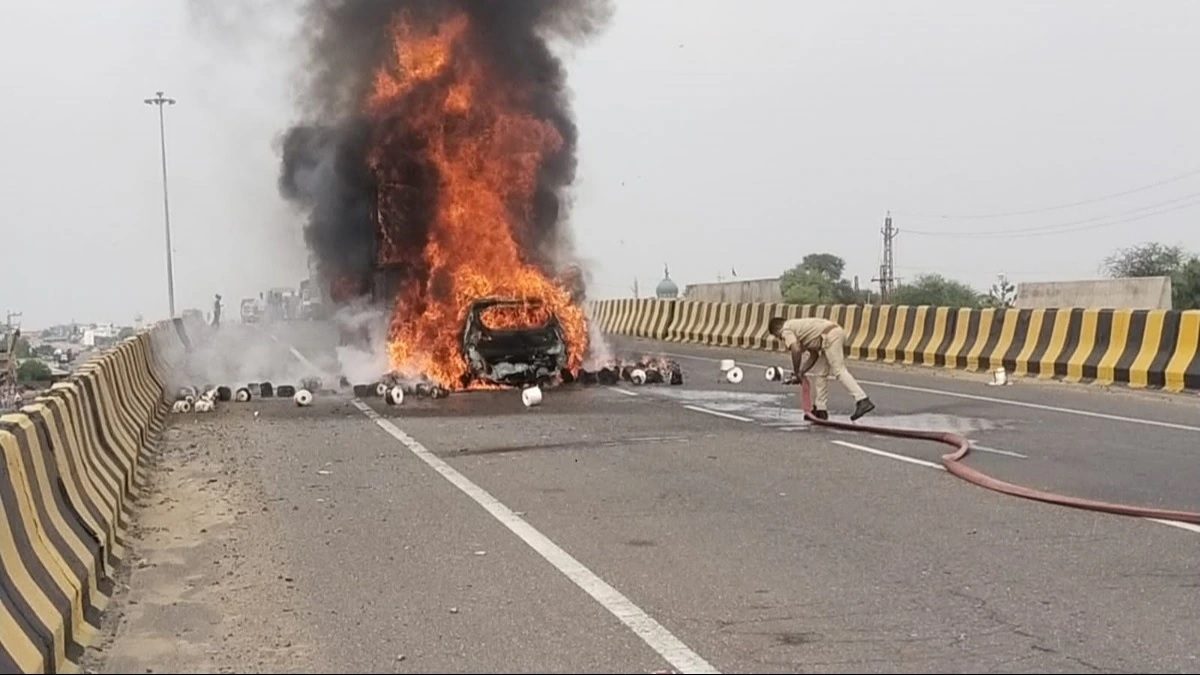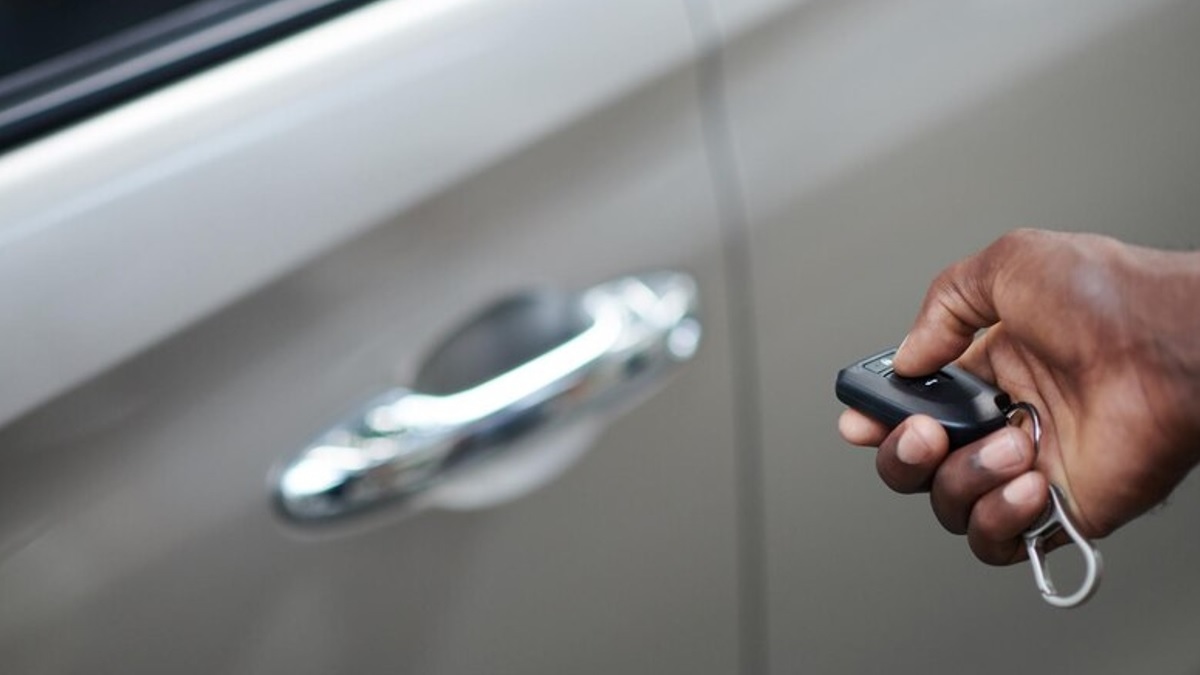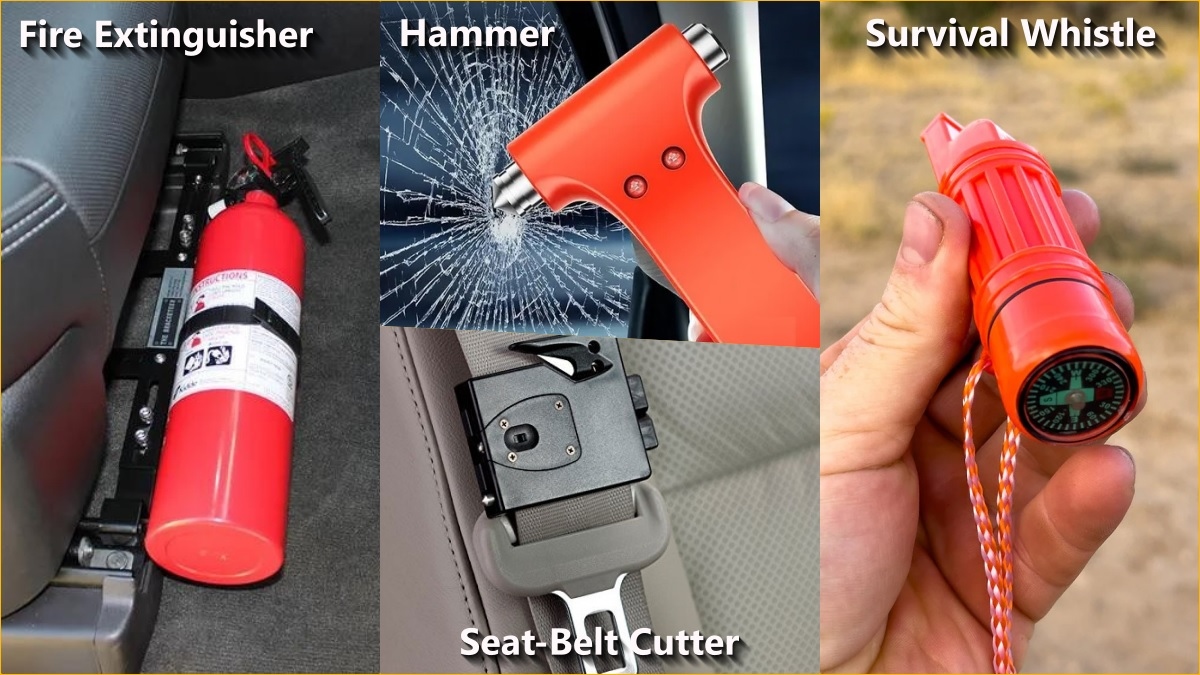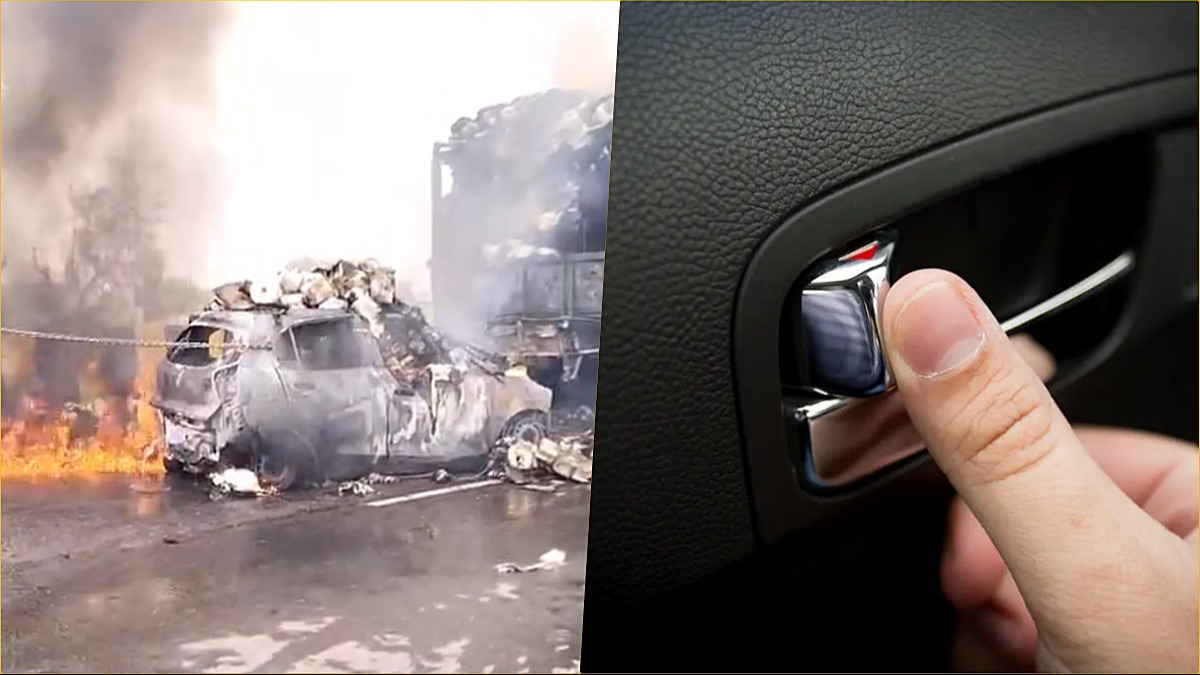Modern cars are equipped with a multitude of safety features aimed at preserving passenger lives during accidents. Features once considered premium are now commonplace, even in entry-level vehicles. The central locking system is one such feature that, ironically, has been implicated in numerous road fatalities, due to its potential to lock doors during a crash. This safety feature is now under scrutiny as questions arise about its actual safety implications. A recent case in Rajasthan brought attention to the dangers when a central locking system may have prevented victims from escaping a burning vehicle, leading to fatalities.
In the district of Sikar, Rajasthan, a horrific accident claimed the lives of seven family members who were burned alive. The incident occurred at 2:30 PM on a Sunday when their car collided with a truck and caught fire. The blaze engulfed the vehicle rapidly, and the locked doors trapped the passengers inside.

Source: aajtak
How did the accident happen?
Hardik Bindal, a resident of Meerut, Uttar Pradesh, was returning home with his family after visiting the Jeen Mata and Balaji sites. While passing through the Fatehpur area in Sikar district, their car collided with a truck ahead. The collision was so severe that the front of the car crumbled and burst into flames.
Tragically, before the occupants could escape, the car was already ablaze. Reports suggest the passengers tried to exit but could not, as the vehicle's doors were locked. Soon, the fire consumed the entire car, leaving only charred remains.
Could the central locking system be the barrier to escape?
It is speculated that the central locking system could have hampered the passengers' efforts to leave the car in time. If the doors had opened, it's highly likely that those inside could have been saved. So, what went wrong?
The central locking system is commonly regarded as the primary suspect. Designed for passenger safety, this feature has unexpectedly become a potential cause of death in car accidents.
What is the central locking system?
Initially, the central locking system was available only in premium cars. Nowadays, it's a standard fixture in most vehicles. The system allows all car doors to be locked and unlocked simultaneously from the driver's side or remotely, eliminating the need to secure each door individually. Modern cars are also equipped with remote keys that can control the locks from a fixed distance, including the trunk.

Source: aajtak
How does the system work?
The central locking system operates on key codes and radio waves. Simplified, the car's key acts as a transmitter with the car as the receiver; when a lock/unlock command is issued via the remote, the system responds if it receives the correct code. This also applies to the lock button found on the driver's side.
In the event that the car is locked using a key, an immobilizer shuts down. This safety device, integrated into the engine, prevents car theft by disabling it unless unlocked with the proper command. While new cars come with this system pre-installed, older cars often have it fitted aftermarket.
The central locking system's most significant benefit is that it allows the easy locking and unlocking of all car doors. It is especially handy when traveling with children; doors can be secured from the driver's seat, ensuring their safety. Additionally, the system safeguards the car against theft. As any tampering with the doors triggers the alarm system, which can only be deactivated with the car key. Thus, it proves useful in preventing car theft incidents.
The downside during accidents:
While the system has its advantages, it also holds potential dangers, especially during accidents. There have been instances where, due to the central lock activation, occupants couldn't exit a crashed vehicle, leading to fatalities from fire or smoke inhalation.
Why does the central locking system become lethal?
In the event of an accident, a vehicle will likely suffer electronic system damage. Collision impact can disrupt the body or wiring, ceasing electronic function. If the central locking system is already engaged, the doors may remain locked. Furthermore, the impact can also severely damage the door or frame, causing them to jam. In such emergencies, people fail to escape the vehicle.

Source: aajtak
What to do in such situations?
In an accident where car doors get locked, your primary goal should always be to get out by any means necessary. There are some tools that can help you:
1- Hammer:
Keep a small yet weighted hammer in the car to break the windows or windshield and enable escape.
2- Seat-belt cutter:
A jammed seat belt is a strong possibility during an accident. A seat-belt cutter can save lives by quickly severing the belt, allowing passengers to exit the vehicle.
3- Survival whistle:
Maintain a survival whistle in the car. If the car falls into a pit or is otherwise hidden from view, the loud sound can help attract attention and aid.
4- Fire extinguisher:
Store a fire extinguisher under your seat or near the front pillar. In the case of a fire, it can be crucial in extinguishing flames and providing a chance for escape.




